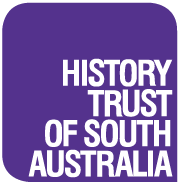Last weekend, over a coffee and some welcome winter sun at the historic North Adelaide Lion Hotel, I took part in an informal repatriation of some of the earliest photographic images of named indigenous Australians. Copies of two photographs that have been in a UK collection for well over a century, depicting James Wanganeen, formerly Wanganni, an Upper Murray Maraura man born around 1836, were presented to his great great granddaughter, Lynnette Wanganeen. He was the first known ancestor of the Wanganeen family and I felt privileged to witness this emotional homecoming. The prints were being returned from the University of Oxford’s Pitt Rivers Museum in the care of Curator of Photograph and Manuscript Collections, Dr Chris Morton who is currently on a whirlwind Australian study visit. He noted that this event was ‘the highlight of his tour’.
For me, the moment was also significant in relation to the rediscovery I made of the mid-19th century daguerreotypes from Poonindie Mission at Mill Cottage in Port Lincoln in 2011, the story of which has been gradually unfolding via this website over the last 18 months. One of the UK photographs, a head and shoulders portrait of James, described as ‘Wongannin, (aged 25), Catechist. S. Australia. 1867, had been central to the identification of one of the Mill Cottage daguerreotypes. When a group of experts examined the daguerreotypes in Adelaide in February 2012, consultant historian Tom Gara recognised one of them as James Wanganeen, because he remembered this identical image in the Oxford collection. Within hours he located the relevant digitised document amongst his records and emailed it to me to compare, and suddenly part of the jigsaw was complete. It’s what makes digitisation such a wonderful tool for speedy and efficient access when undertaking this kind of research.
This discovery was amazingly serendipitous as it soon transpired that an ARC-funded project Globalisation, Photography and Race: the Circulation and Return of Aboriginal Photographs in Europe, led by former Monash Associate Professor, Jane Lydon (now at UWA) was currently in progress and Dr Morton was researching Aboriginal visual histories in the Pitt Rivers Museum’s photograph collection. Much international communication then ensued. Jane has since identified three images of James Wanganeen; the one in Oxford, thought to be a print taken from a twin daguerreotype of the Port Lincoln example; a Duryea Carte de Visite of James and his wife Mary Jane amongst Mathew Hale’s papers in the University of Bristol library; and now the daguerreotype at Mill Cottage in Port Lincoln. Jane has indicated that these three portraits collected by the Mission’s leaders expressed James’ ‘status within the community’.
Wanganni is believed to have left the Upper Murray area as a young boy after unrest in the community, and attended the Aboriginal school in Adelaide. However, when this closed down in 1852 he was sent to Poonindie Mission which had been recently established by Archdeacon Mathew Hale as “a Christian village of South Australian Natives, reclaimed from barbarism, trained to the duties of social Christian life and walking in the fear of God”. Baptised in 1857 and taking the Christian name James, and the new anglicised surname Wanganeen, he was known to regularly read the lessons at church and travel further afield as an evangelist.
Lynnette is extremely proud of her heritage. Although she has known James’ story for some time (The Wanganeen Family Genealogy History was written in 1985 by her relative Doreen Kartinyeri), she has only recently seen James ‘face to face’ when she attended the launch of the newly preserved Mill Cottage daguerreotypes in May. Now she and her extended family have access to all three of the known images of their ancestor; and we hope that the networks that have been set up as a result of these discoveries will unearth more information and identification of other indigenous images in both Australia and worldwide.
Chris is giving a public lecture about his research in Perth on Tuesday 27 August.

